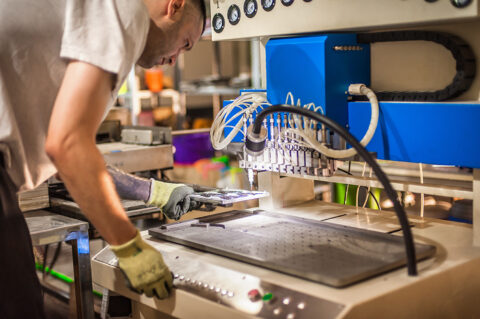Opening
Manufacturing is often measured in tenths of a point—but this week’s numbers told a much bigger story.
The latest ISM report showed the U.S. Manufacturing PMI rising to 49.1 in September, its first uptick in seven months. On paper, that still marks contraction—but in context, it signals stability. New orders softened slightly, yet supplier delivery times lengthened, a classic sign that backlogs are growing again. Across the country, small and mid-sized manufacturers are adjusting, adapting, and quietly rebuilding strength one order and one partnership at a time.
It’s not a boom—but it’s the sound of a floor forming beneath the sector.
Main Stories
1. Factory Activity Shows Signs of Bottoming Out
After half a year of decline, America’s manufacturing engine may be stabilizing. The ISM index’s climb to 49.1 (Oct 1) reflected improved supply conditions and steady output even as demand remained uneven. For small manufacturers, this is the kind of hard-earned equilibrium that defines resilience—finding efficiency, nurturing relationships, and preparing for the next growth cycle.
The bigger picture: The slowdown appears to be giving way to a slow pivot. It’s not a “V-shaped” recovery, but a methodical climb driven by firms learning how to balance cost with resiliency—exactly the kind of adaptive strength that will define the next decade of American manufacturing.
(Sources: ISM, Reuters, Manufacturing Dive — Oct 1, 2025)
2. FDA Incentivizes U.S.-Made Generic Drugs
The FDA’s new pilot program (Oct 3) will fast-track review for generic drugs tested and manufactured entirely in the United States—a subtle but significant move in America’s industrial policy evolution. Rather than sweeping subsidies, this initiative uses regulatory speed as a reward for domestic capacity.
For small and mid-sized pharmaceutical manufacturers, it’s a signal: proximity, transparency, and reliability are finally being valued as competitive advantages. In a global market still shaped by pandemic-era shortages, this policy reinforces that national health security is built on manufacturing capability at home.
(Sources: Reuters, FDA.gov, PharmTech — Oct 3, 2025)
3. Manufacturing Day Celebrates the Backbone of American Industry
On September 30, the U.S. Census Bureau marked Manufacturing Day’s 14th anniversary, spotlighting 250,000 small manufacturers employing 13 million Americans. The week’s events celebrated not just machines and metrics—but the people whose skill and relationships power the industrial base.
The message was clear: America’s manufacturing future will be written not in mega-plants, but in the distributed network of small, connected firms that form the heart of every resilient supply chain.
(Source: U.S. Census Bureau — Sept 30, 2025)
Quick Hits
-
ISM Services PMI hits 50.0 in September — the breakeven point, showing broader economic steadiness amid cooling demand. (Reuters, Oct 3, 2025)
-
DoD finalizes new cybersecurity requirements for defense contractors, expanding compliance expectations for smaller firms. (Federal Register, Sept 25, 2025)
-
IPO momentum cools as Washington funding debates create uncertainty for capital markets. (Reuters, Oct 1, 2025)
Key Takeaways
-
PMI rose to 49.1, suggesting U.S. manufacturing is stabilizing after months of contraction.
-
FDA pilot fast-tracks U.S.-made generics, signaling a shift toward precision industrial policy.
-
250,000 small firms employing 13M workers remain the backbone of America’s industrial capacity.
Closing
If there’s a unifying theme this week, it’s deliberate progress. From shop floors to agency offices, the focus is shifting from crisis response to strategic endurance. The work is quieter now—but no less vital.
Every policy tweak, production milestone, and new supplier relationship is part of a larger mission: rebuilding America’s ability to design, make, and deliver critical goods here at home.
As we move deeper into Q4, the story of U.S. manufacturing remains one of grit, intelligence, and community—proof that our national capacity isn’t just recovering; it’s reorganizing for the long game.




